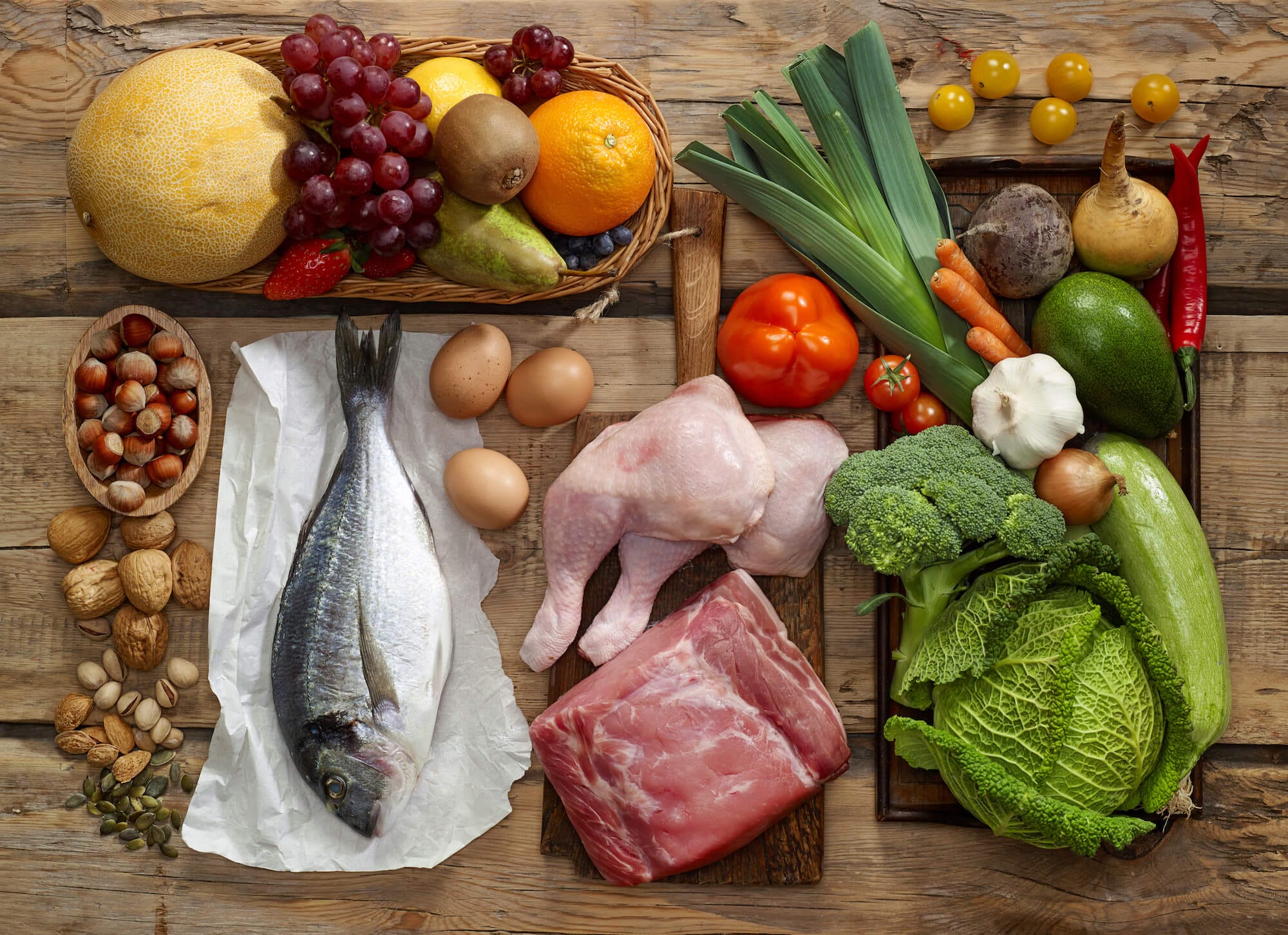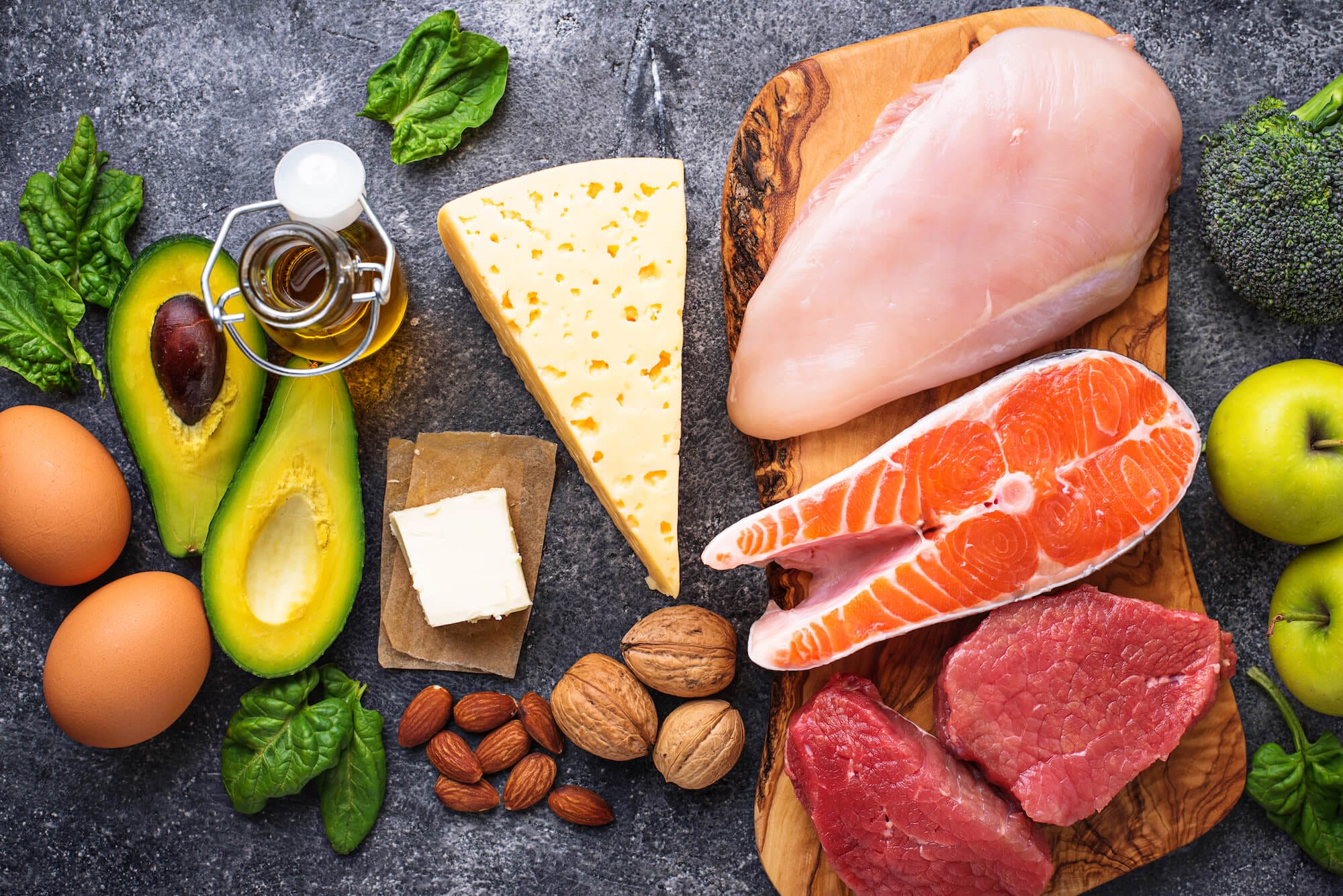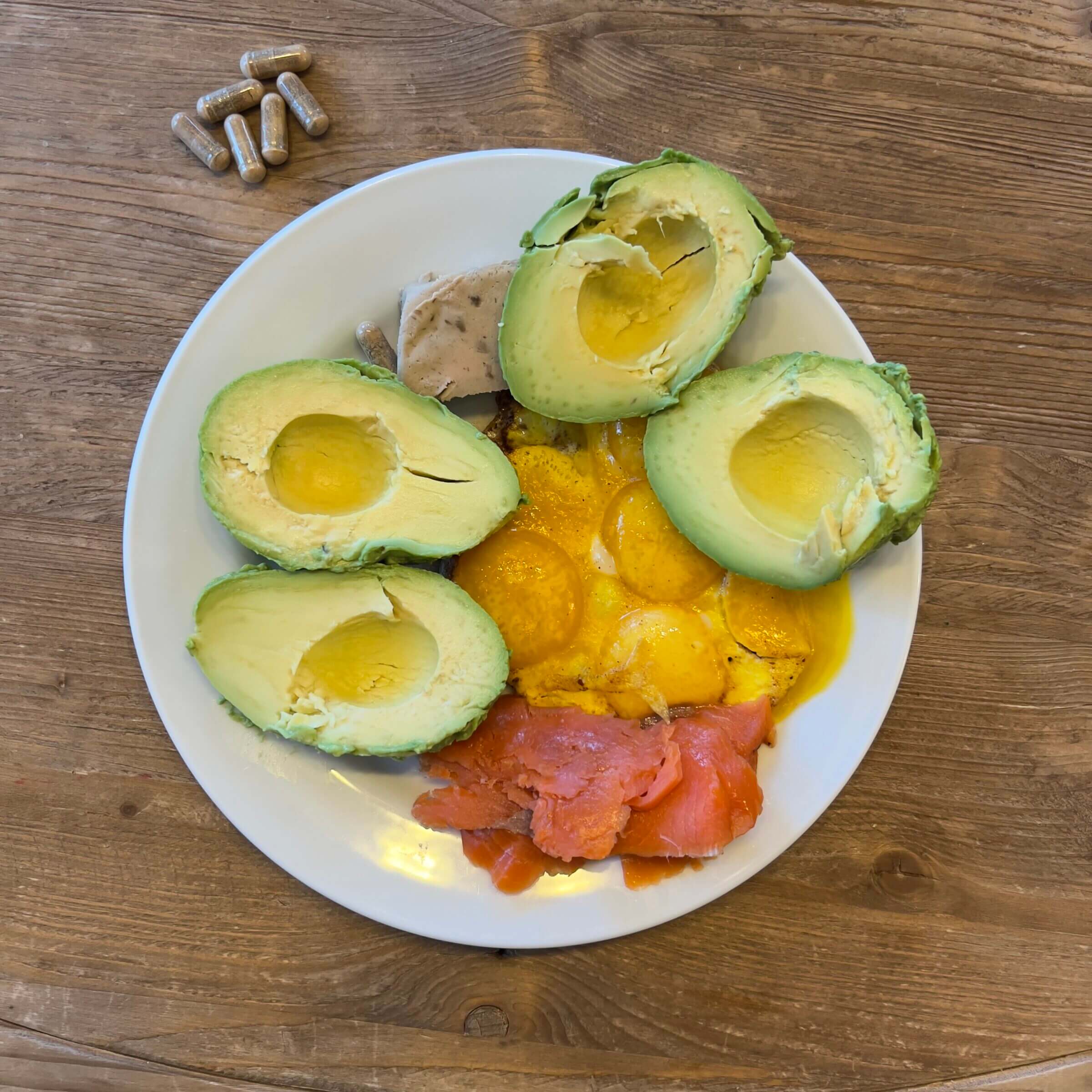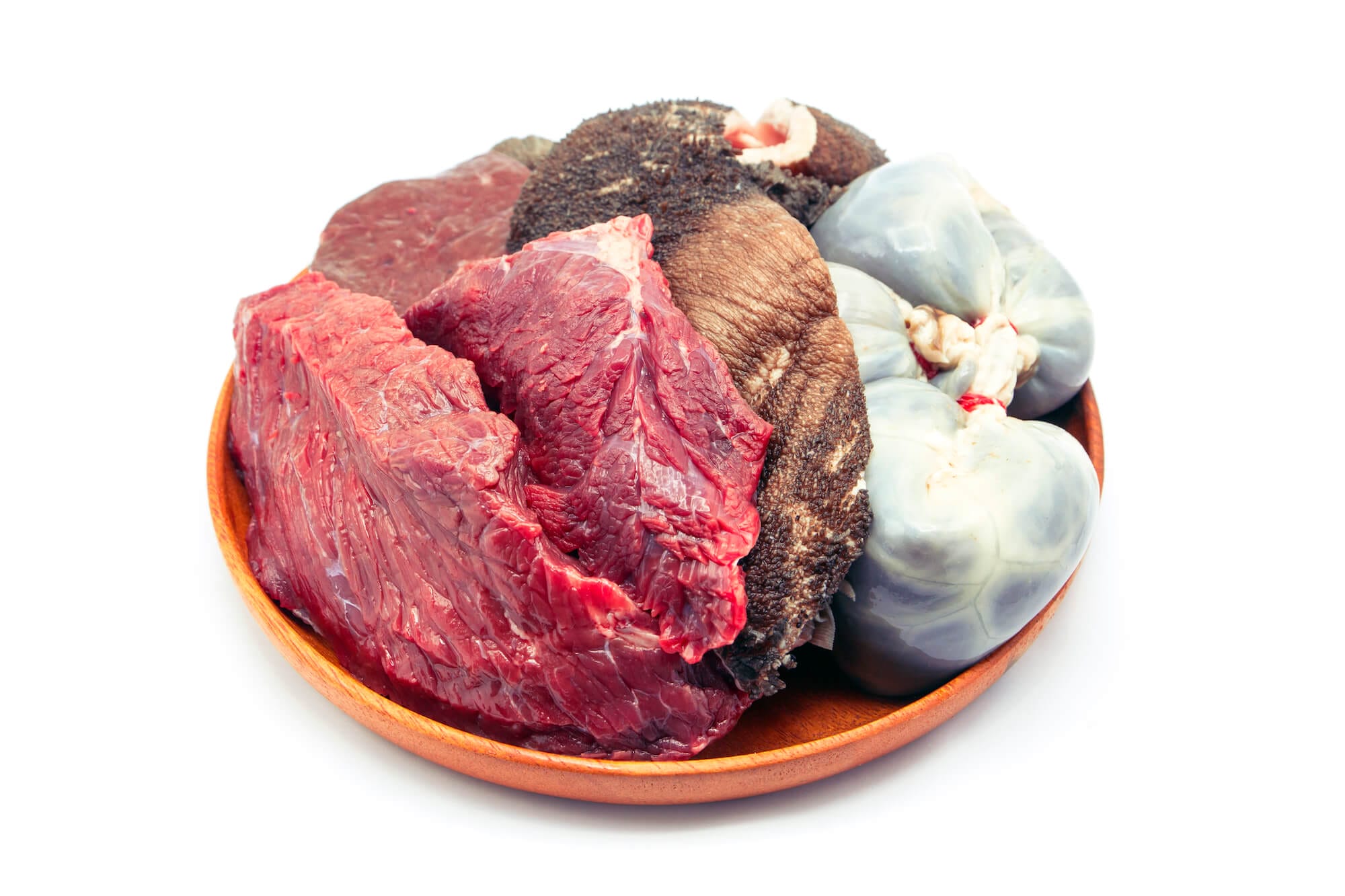Fueling your body with the right foods is crucial for staying healthy and reducing the risk of chronic disease. But the nutrition world is filled with conflicting information, poorly designed studies and buzzwords that make it difficult to figure out the best diet for optimal health.
I’ve tested a variety of dietary frameworks over the past four decades, including the Mediterranean diet, the standard American diet, paleo, keto, carnivore and combinations thereof, and I’ve experienced the pros and cons of each along the way.
So in this article, I’ll share what I’ve learned after all of that experimentation, including:
- The benefits and drawbacks of popular dietary frameworks including paleo, keto and carnivore.
- The hidden dangers of modern paleo and keto diets.
- How to determine which diet works best for your lifestyle.
- Why how you eat may be just as important as what you eat.
- Why a combination of these dietary frameworks most accurately reflects how our ancestors ate.
In case you’re wondering, this article does not contain information about plant-based diets (e.g., vegetarianism and veganism), because these diets are inconsistent with human evolution and physiology (as discussed in my article comparing meats vs. plants). However, if you leverage some of the techniques and principles I outline in this article, you can make certain plants a part of your diet without negatively impacting your health and well-being.
Before we jump into the side-by-side comparison of the various dietary frameworks mentioned above, let me give you a brief overview of my dietary journey to add some context to what I’m sharing in this article.
Note: The diets below are not ranked but reflect the order in which I’ve tried them. Your dietary goals and existing health conditions determine which diet might be best suited for you.
My Experience with Popular Diets Over the Past Four Decades


I grew up in Austria in the 1980s and my family followed what might be called a Mediterranean diet that consisted of seafood, vegetables, whole grains and meat. During that time, I started developing irritable bowel syndrome (IBS), an inflammatory and painful condition that my father and grandfather also suffered from.
When I turned 25, I got an opportunity to move to the United States, where I quickly adopted the standard American diet, which made my IBS symptoms even worse.
While looking for a cure for my chronic gut issues, I stumbled across the paleo diet, which made me think about the impact of food and nutrition on health. After following a Paleolithic diet for a few years, I began cutting out carbs, leading me down the path of a very low-carb ketogenic diet.
But as I mentioned in my article about how I cured my IBS, the modern keto diet I was following at the time caused my gut issues to return. As a result, I decided to cut out all foods that could potentially be irritating my gut, leaving me with nothing to eat but meat and eggs.
After a few weeks on a strict carnivore diet, I slowly began reintroducing other types of food, including raw honey, dairy, and limited fruits and vegetables.
Thanks to a lot of trial and error (and self-observation), I learned that what works for someone else may not necessarily work for me (and vice versa), and that food preparation is just as important as food selection. Additionally, I realized that the timing of meals makes a difference in how I feel after eating.
My goal with this article is to not only help you understand the key differences (including the pros and cons) of the various types of diets, but also to equip you with some of the knowledge I’ve acquired over the years so that you can pick the dietary framework that works best for your physiology, level of activity and genetic makeup.
Paleo vs. Keto vs. Carnivore: Benefits

The table below illustrates some of the (health) benefits of paleo, keto and carnivore diets.
| Benefits | Paleo | Keto | Carnivore |
|---|---|---|---|
| Fixes gut issues | ★★★☆☆ | ★★★☆☆ | ★★★★★ |
| Improves insulin sensitivity | ★★★☆☆ | ★★★★★ | ★★★★★ |
| Lowers blood sugar | ★★★☆☆ | ★★★★★ | ★★★★★ |
| Lowers blood pressure | ★★★★☆ | ★★★★★ | ★★★★★ |
| Improves blood markers | ★★★★☆ | ★★★★★ | ★★★★★ |
| Social compatibility | ★★★★☆ | ★★★☆☆ | ★☆☆☆☆ |
| Improves energy | ★★★☆☆ | ★★★★☆ | ★★★★☆ |
| Improves mental clarity | ★★★☆☆ | ★★★★★ | ★★★★★ |
| Improves exercise performance | ★★★★★ | ★★★★☆ | ★★★★☆ |
| Improves skin health | ★★★☆☆ | ★★★☆☆ | ★★★★★ |
| Appetite control | ★★★☆☆ | ★★★★☆ | ★★★★☆ |
| Blood sugar control | ★★★☆☆ | ★★★★★ | ★★★★★ |
I firmly believe that our Paleolithic ancestors and early humans did not follow a strict dietary framework. Instead, they ate what was available to them. At the same time, based on what we know about human evolution, they obtained most of their energy and nutrients from animal sources, including organs, fat, muscle meat and bone marrow.
Combined with how our jaws, teeth and gastrointestinal system evolved over millions of years, I conclude that humans are meat-leaning omnivores who thrive on a meat-based diet.
However, we also know that humans have learned to process other types of foods (including plants) in a way that makes them more compatible with our digestive system. I’m referring to fermentation, heating, soaking, sprouting and similar techniques that reduce the number of toxins in the food while unlocking some of its nutrients.
That’s why I recommend a mix of the various dietary frameworks I discuss in this article — one that is based on your circumstances, existing medical conditions and level of physical activity.
For example, suppose you’re metabolically healthy and have a healthy gut. In that case, you can likely include a variety of fruits and veggies (or even dairy) as part of your diet without suffering any consequences. That’s particularly true if you learn how to prepare certain types of foods that are otherwise not compatible with human physiology.
For the past few months, I’ve been following a nose-to-tail animal-based diet that also includes raw honey (from our own beehives), raw dairy, seasonal sweet fruits and the least-toxic plants (e.g., peeled and deseeded squashes, olives and avocados). Depending on my workout schedule and other lifestyle factors, I vary my carb intake to meet my body’s demands while retaining full metabolic flexibility.
I also fast intermittently to give my digestive system a break and to allow my body to execute its natural repair programs (autophagy).
Paleo vs. Keto vs. Carnivore: Foods

Below is a comparison table to help you understand what foods you can and cannot have on each of the three diets discussed in this article.
| Foods | Paleo | Keto | Carnivore |
|---|---|---|---|
| Meat | ✓ | ✓ | ✓ |
| Seafood | ✓ | ✓ | ✓ |
| Eggs | ✓ | ✓ | ✓ |
| Sweet fruits | ✓ | ✘ | ✘ |
| Non-starchy veggies | ✓ | ✓ | ✘ |
| Starchy veggies | ✓ (except potatoes) | ✘ | ✘ |
| Dairy products | ✘ | Aged cheeses | ✓ |
| Grains | ✘ | ✘ | ✘ |
| Legumes and soy | ✘ | ✘ | ✘ |
| Nuts and seeds | ✓ | ✓ | ✘ |
| Honey, agave and maple syrup | ✓ | ✘ | ✘ |
| Processed Carbs | ✘ | ✘ | ✘ |
| Alcohol | ✘ | Low glycemic alcohol only | ✘ |
| Coffee | ✓ | ✓ | ✘ |
| Bone broth | ✓ | ✓ | ✓ |
| Vegetable (seed) oils | ✘ | ✓ | ✘ |
| Refined sugars | ✘ | ✘ | ✘ |
| Healthy fats | Tallow, butter, ghee, lard, olive oil, coconut oil, avocado oil, palm oil | Tallow, butter, ghee, lard, olive oil, coconut oil, avocado oil, palm oil | Tallow, butter, ghee, lard |
Looking at the table above, it may appear as if paleo is more restrictive than keto. However, from experience, I can tell you that the paleo diet is relatively easy to implement and follow.
On the other hand, the Carnivore diet is the most restrictive diet of all, limiting your food choices largely to meat, seafood and eggs.
Paleo Diet

Pros
- Based on whole foods that mimic what our ancestors might have had access to.
- Excludes many inflammatory food categories.
- Relatively easy to adhere to.
- Offers scientifically-proven health benefits.
Cons
- Excludes dairy, including raw dairy, which can be an excellent source of nutrients for many people.
- Not all paleo-friendly foods (especially processed ones) are healthy.
- Does not exclude all inflammatory food categories.
The Paleolithic (paleo) diet — which is sometimes called the caveman diet — aims to mimic the dietary habits of our hunter-gatherer ancestors and the early humans that lived from about 2.6 million years ago up to around 8,000 B.C.
Our ancestors who lived during the Paleolithic era didn’t suffer from the chronic diseases that plague modern humans, and supporters of the paleo diet argue that you can significantly improve your health by replicating their diet as closely as possible with modern foods.
What can you eat on the paleo diet? Almost anything that can be hunted or gathered in nature, including grass-fed meat, organ meat and fat from pasture-raised animals, wild-caught seafood, pasture raised eggs, seasonal fruits and vegetables, and nuts and seeds.
The paleo diet excludes food groups that didn’t exist (or weren’t prevalent) before the agricultural revolution that began about 12,000 years ago, such as grains, legumes, potatoes, processed carbohydrates, vegetable (seed) oils, sugar-laden beverages and other heavily processed foods.
Paleo Diet Health Benefits

Following a common sense paleo diet has several scientifically-proven health benefits, including:
- Improved metabolic markers, including triglycerides, HbA1c, HDL and fasting insulin.
- Improved weight management (and weight loss, if you’re currently overweight).
- Reduced blood pressure.
- Reduced risk of developing a metabolic disease.
By “common sense” paleo, I mean a diet that mimics how our ancestors would have eaten.
For example, eating a gallon of maple syrup every week may technically be allowed on the paleo diet, but it doesn’t reflect ancestral eating patterns and will likely lead to the same blood sugar issues that come from over-consuming processed carbs.
Here are a few scientific studies that go into more detail about the benefits of paleo diets:
- A Paleolithic diet improves glucose tolerance more than a Mediterranean-like diet in individuals with ischaemic heart disease.
- Effects of a short-term intervention with a Paleolithic diet in healthy volunteers.
- Beneficial effects of a Paleolithic diet on cardiovascular risk factors in Type 2 diabetes: a randomized cross-over pilot study.
- Metabolic and physiologic improvements from consuming a Paleolithic, hunter-gatherer type diet.
- A Palaeolithic-type diet causes strong tissue-specific effects on ectopic fat deposition in obese postmenopausal women.
Potential Issues Associated with the Paleo Diet

Unfortunately, there are several issues with how most people approach a modern paleo diet. That includes my me and my wife, who made many mistakes when we first began changing our dietary lifestyle.
I’m not referring to the fact that the paleo diet is an elimination diet that discourages the consumption of grains, legumes and dairy; I don’t think you need any of those food categories for optimal health (although raw dairy can be a good source of nutrients).
Keep in mind that our hunter-gatherer ancestors’ primary source of energy and nutrients were the organs, fat and muscle meat of animals. Plants were merely a survival food that they relied on in the event of an unsuccessful hunt.
Looking back at what my wife and I ate during the later stages of our paleo journey, I realize that our diet bore little resemblance to the diet of our ancestors. For example, we consumed a massive amount of veggies (especially sweet potatoes) and used nut flour to turn everyday dishes into paleo-friendly meals. We even bought cookbooks that taught us how to bake paleo-friendly pastries and desserts.
While everything we ate was technically paleo-friendly, we completely missed the point of paleolithic eating — to mimic how our ancestors ate. Have you ever read about Neanderthals enjoying a meal with sweet potato fries on the side and two paleo muffins for dessert? I haven’t.
So if you decide to embrace a paleo diet, I strongly recommend keeping in mind how our ancestors used to eat. Here are some guidelines that can help you to get the most out of your paleo journey:
- Make the organs, fat and muscle meat of animals the center of your diet.
- Consume seasonal and locally-grown produce in moderation.
- Intermittently fast and don’t be afraid to skip meals (our ancestors didn’t have 24/7 access to food).
- Nuts and seeds are rich sources of pro-inflammatory antinutrients and linoleic acid (a polyunsaturated fatty acid). A handful of nuts and seeds here and there is fine, but avoid consuming them regularly — especially in the form of flour.
- Listen to your body and remove foods from your diet that you don’t respond well to (especially plants).
- Don’t regularly overindulge in sweeteners, especially if you’re having trouble maintaining healthy blood sugar levels.
- Adjust your carbohydrate consumption to your level of physical activity and any preexisting conditions you might have. For example, if you have Type 2 diabetes, I recommend following a low-carb (or ketogenic) paleo diet.
If you follow the above guidelines, the paleo diet can be an excellent choice to improve your health and well-being.
Keto Diet

Pros
- Nutritional ketosis is one of the most effective ways to lose weight and burn fat.
- Great for improving insulin sensitivity.
- Improves mental clarity.
- Offers scientifically-proven health benefits.
Cons
- Can be difficult to sustain.
- More socially difficult to implement than paleo.
- Not all keto-friendly foods (especially processed ones) are healthy.
The ketogenic diet is a low-carb diet that excludes high-glycemic foods (such as sweet fruits and starchy vegetables), which cause a dramatic rise in blood sugar levels. In other words, you’re supposed to keep your daily carb intake below 25 grams. On the flip side, you’re encouraged to consume higher amounts of fat (around 70% of your daily calories) and moderate amounts of protein.
The goal of the keto diet is to enable you to maintain stable blood sugar levels and improve your insulin sensitivity, because poor insulin sensitivity (aka insulin resistance) is one of the major risk factors for developing a chronic disease. (The other one is inflammation.)
In other words, the more sensitive the cells in your body are to insulin, the lower your risk is of developing metabolic diseases, such as diabetes, cardiovascular disease, stroke, cancer, Alzheimer’s and others.
I’m a huge fan of low-carb eating because it mimics how our ancestors ate.
Just think about it: depending on location, access to carbohydrates (from veggies, honey and fruits) was likely limited to certain times of the year.
Abstaining from carbs is an excellent way to improve your metabolic flexibility, which is your body’s natural ability to switch back and forth between using carbs and fat (or ketone bodies) for fuel.
That’s because when you limit the carbohydrate content of your meals, your body is forced to use fatty acids and ketones as energy sources. Plus, it has to make glucose from non-carbohydrate sources (e.g., damaged proteins and amino acids) to feed those cells that can’t use ketones.
Keto Diet Health Benefits
Besides being an effective tool in the treatment of childhood epilepsy, the ketogenic diet has numerous scientifically-proven health benefits, including
- Controls blood sugar and reverses Type 2 diabetes.
- Prevents Alzheimer’s.
- Promotes weight loss.
- Helps with appetite control.
- Improves health markers.
- Increases energy and mental performance.
- Normalizes digestion.
- Treats epilepsy.
- Decreases blood pressure.
To learn more about the benefits of a properly implemented ketogenic diet, as well as the scientific evidence that supports the statements above, check out my ultimate guide to the Paleolithic ketogenic diet.
Potential Issues Associated with the Keto Diet

Keto is a relatively strict elimination diet that discourages the consumption of many foods that might be a regular part of your current diet. In other words, you can’t have anything that has a lot of carbs, including sweet fruits, starchy veggies, sweeteners, grains and more.
So depending on how disciplined you are and how far you’re willing to go to defend your dietary choices within your circle of friends and family, the ketogenic diet might be more difficult to sustain than a paleo diet.
Additionally, you might experience carb withdrawal symptoms and the keto flu during the first few weeks of your keto journey.
However, I strongly believe that the benefits of low-carb eating vastly outweigh the potential downsides and short-term side effects. That’s why I followed a strict ketogenic diet for several years; doing so dramatically affected my body composition, insulin sensitivity and metabolic flexibility.

The real issue with modern keto diets is the prevalence of keto-friendly junk food that makes it easy to hit the right macronutrients while consuming processed foods that are detrimental to your (gastrointestinal) health. A great example is the Keto Bread from Kiss My Keto, which contains wheat gluten.
Many keto-friendly snacks are high in fat and low in carbs, but they’re filled with inflammatory seed oils, nut flours and artificial sweeteners. That’s one of the reasons why I strongly recommend applying paleo principles to any ketogenic diet.
In other words, I recommend cooking keto meals from whole-food ingredients and avoiding foods that are incompatible with human physiology, including industrial seed oils such as canola oil and artificial sweeteners such as sucralose.
I’d also avoid consuming excess amounts of plant foods — even low-glycemic ones — because all plants contain natural defense chemicals and anti-nutrients that can wreak havoc on your gut (like they did on mine).
Note: Ketone supplements are an excellent way to ease your way into a low carb diet. That’s because it usually takes several days to several weeks for your body to become fat adapted and produce its own ketones. During that time, you may feel miserable — a condition known as the keto flu. Using high-quality exogenous ketone supplements during that time ensures your brain has enough fuel, which mitigates the the symptoms of the keto flu.
Carnivore Diet

Pros
- Excellent for treating various health conditions.
- Great way to repair your gut.
- Makes shopping and cooking simple.
- Offers scientifically-proven health benefits.
Cons
- Likely challenging to sustain for many people.
- Socially more difficult to implement than paleo or keto.
The carnivore diet is arguably the most “extreme” diet on this list because it discourages consuming everything except for meat, seafood and eggs. Since none of those foods have carbs, the carnivore diet is a ketogenic diet by definition.
The premise of the carnivore diet is that humans can get all the nutrients they need from animal-based sources, including protein, fat, vitamins and minerals.
I agree with that assessment — especially if you consume the entire animal, rather than just the muscle meat. In fact, the organs of ruminant animals like cows are the best sources of micronutrients and the main reason why I make organs (and liver in particular) a regular part of my diet.
It’s worth noting that, according to archaeologists like Dr. Bill Schindler (who I recently interviewed for an upcoming video on my YouTube channel), one of the most critical milestones in human evolution and the development of our brain was when our ancestors became hunters, thus getting the first access to the fat and organs of prey animals.
Benefits of a Carnivore Diet

Considering that the carnivore diet is ketogenic, all of the benefits mentioned in the keto diet section apply here (so I won’t list them again).
Additionally, there are countless success stories from people sharing how the carnivore diet fixed their gut issues and other chronic diseases.
As I explained in my article about how I cured irritable bowel syndrome (IBS), I was able to fix my own gut issues by removing all plant foods from my diet. Doing so allowed my gut to heal while preventing adding fuel to the fire (in the form of plant toxins).
Potential Issues Associated with the Carnivore Diet

The main issue with the carnivore diet is that it can be difficult to sustain over extended periods, simply due to our social norms.
For most of us, food is more than just fuel. It’s part of our culture, family and history.
The good news is that I don’t think you have to follow a strict carnivore diet for the rest of your life to maintain optimal health.
Instead, consider the carnivore diet a valuable tool to fix existing health issues, including autoimmune conditions, leaky gut, insulin resistance and similar chronic conditions. Once you’re healthy, you can start including other types of food, such as raw honey, seasonal fruits and the least-toxic plants. If you tolerate dairy, you can even include raw or fermented dairy as part of your diet.
Dr. Paul Saladino (aka Carnivore MD) calls it an animal-based approach to eating, and it’s the dietary framework that I follow.
Frequently Asked Questions
You can find answers to the most frequently asked questions below. To learn more about the keto and paleo diets and the combination of both, make sure to read my ultimate guide to the Paleolithic ketogenic diet.
A paleo diet that’s centered around eating animals nose-to-tail is an excellent framework for both improving and maintaining your health. As a result, I recommend it to anyone who currently follows a standard American diet, the Mediterranean diet or a plant-based diet.
However, if you suffer from gut issues (e.g., IBS, ulcers or Crohn’s disease), I recommend starting with a Carnivore diet first to heal your gut before transitioning to a paleo diet.
Likewise, if you have Type 2 diabetes or other blood sugar/insulin issues, I recommend a ketogenic diet first.
I recommend a low-carbohydrate, high-fat diet if you have any issues related to insulin sensitivity, such as diabetes (Type I and II) or Alzheimer’s disease (aka Type 3 diabetes). I also recommend keto if you’re trying to lose weight (fat) and if you have impaired metabolic flexibility. You can tell if you’re metabolically flexible if you can skip a meal or two without major cravings or getting hangry.
The carnivore diet is an excellent tool to treat a wide variety of metabolic issues. In other words, if you’ve been diagnosed with a chronic disease or gut issues, I recommend starting on a carnivore diet and sticking with it for at least 30 days (or as long as it takes to fix your issues).
After that, you can safely stay on a carnivore diet if you want to, but there is nothing wrong with reintroducing other paleo or keto-friendly foods.
Arguably the most effective diet for burning fat and weight loss is a low-carb ketogenic diet — especially when combined with intermittent fasting. Just make sure to slowly decrease your carbohydrate intake over the course of a few weeks to avoid short-term side effects such as hormonal issues. That’s particularly important if you’re a woman because women tend to be more sensitive to dietary changes.
Note that the carnivore diet is a ketogenic diet, so you can leverage a classic keto or carnivore diet to accelerate your weight loss journey.
A carnivore diet that’s free of potentially inflammatory plant toxins is the best way to heal your gut and rebalance its microbiome.
If you don’t consume dairy, you can get calcium from bone-in fish (e.g., sardines), from bone broth, or even from small bone fragments you may swallow when ripping the meat off bones.
Many nutritionists portray leafy greens as healthy foods and an excellent source of micronutrients. I consider that misguided advice because leafy greens are loaded with toxic defense chemicals while providing little nutritional value, as I explained in detail in my article comparing meats vs. plants.
Wrap-Up: Paleo vs. Keto vs. Carnivore

The world of nutrition has become increasingly complex and confusing and is filled with misleading and contradictory information.
Depending on who you ask, things like leafy greens and nuts are either healthy foods or poison to the body that contribute to leaky gut, inflammation, obesity and a ton of other chronic diseases.
Whenever I’m confronted with the question of “healthy or not?” I wonder if our paleolithic ancestors had access to the food in question. Additionally, I think about how much of the food early humans would have consumed and how they would have prepared it.
By trying to answer those questions, it becomes much easier to weed out foods we shouldn’t be eating at all, or to prepare them in a way that makes them more compatible with our physiology.
A similar principle applies to picking the right dietary framework.
The traditional paleo diet aims to mimic the dietary habits of early humans. While that sounds like the perfect diet for modern humans (since our physiology and genetic makeup haven’t dramatically changed in the past 50,000 years), it’s crucial to apply some common sense. For example, early humans didn’t eat every day (if they couldn’t find food) and the availability of certain foods was limited by the seasons.
So just because a given food is paleo-friendly, that doesn’t mean you should be eating pounds of it.
In fact, I would argue the paleo diet was likely very low in carbs during certain times of the year. In other words, if nothing was growing, humans were limited to eating animals, and were thus following a ketogenic or carnivore diet for extended periods.
That’s why I think it makes sense to follow a dietary framework that includes bits and pieces of the modern paleo, keto and carnivore diets. Humans thrive when they’re challenged, because it forces them to adapt and get stronger. By intermittently eliminating certain foods, food categories or entire macronutrients (such as carbs), you mimic the dietary environment our ancestors lived in.
In my opinion, that’s the best you can do for optimal health.

Michael is a healthy living enthusiast and CrossFit athlete whose goal is to help people achieve optimal health by bridging the gap between ancestral living and the demands of modern society.
Medical Disclaimer
The information shared on this blog is for educational purposes only, is not a substitute for the advice of medical doctors or registered dieticians (which we are not) and should not be used to prevent, diagnose, or treat any condition. Consult with a physician before starting a fitness regimen, adding supplements to your diet, or making other changes that may affect your medications, treatment plan or overall health. MichaelKummer.com and its owner MK Media Group, LLC are not liable for how you use and implement the information shared here, which is based on the opinions of the authors formed after engaging in personal use and research. We recommend products, services, or programs and are sometimes compensated for doing so as affiliates. Please read our Terms and Conditions for further information, including our privacy policy.
I started the carnivore diet back in mid November 2023. It seemed that it was going to be a costly way to go, but as it turns out, it is very affordable as you are not throwing money at veggies, fruits, highly processed junk, snacks…I got to a point that I was only hungry once a day, I also felt full quicker. In May this year, I started to incorporate low/0 oxalate fruits and veggies back into my diet and non processed low oxalate nuts and such. I have recently started feeling more aches and pains in my muscles and joints, so I am going to go back to just carnivore and stick with that, I felt GREAT on just that. My only problem is that I am of a slim build and I was getting too thin. I will have to figure out how to consume more fats and proteins by forcing myself to eat more and more often. What a good problem to have!
Man, this diet thing is so difficult.
I can either be vegan or carnivore and still manage to stay healthy.
But I haven’t been sick after becoming “mostly” vegan for a long time, which tells me that I’m slightly on vegan side.
Statistics also differs depending on source too, like some sours says vegans live longer while other says completely opposite.
So I’m like F, I can’t trust any source these days, instead I’ve gotta try everything on my own.
Besides there are also other factors such as doing exercise, having positive thoughts and so on.
Human body, to me still is myth.
Everything seems difficult and confusing until you look at where the money is (and goes). It also helps to look at how humans have evolved over millions of years. After that, it’s crystal clear that humans are not herbivores but meat-leaning omnivores. There is also a difference between having been diagnosed with a disease and being healthy. Anyone who is vegan long enough will show signs of falling apart but it starts one the inside where you can’t see it unless you know where to look (bone density, hormone levels…).
What an incredibly useful body of knowledge, advice, AND choices! You’ve out-done yourself, Michael.
I just have two comments – you don’t seem to ever address the affordability issue. Maybe your reader base is all upscale consumers? But the financial costs to following most of these avenues are prohibitive to many, especially if you factor in the other comment I have – the time/availability issue. Yes, depending on our commitment to following one of these healthy nutritional lifestyles, we can commit. But gosh, I don’t have access to funds to buy premium cuts of red meat. I don’t have any desire/time to cook for myself. I would at least *try* the carnivore diet if it were as easy as that. And trying to get my wife to try the carnivore for her IBS, well, is so counter to her cultural programming.
So, in the end, I love reading about all of this, but it’s like looking in at a warm, family Christmas scene from outside the window in the snow.
PS: This line made me laugh – you HAD to include it: “or even from small bone fragments you may swallow when ripping the meat off bones. ” Ha!
Again, thank you for your impressive efforts to help guide us down the path of well-being and living!
Daniel
Hi Daniel!
Eating the highest-quality foods appears to be expensive. However, that perception is skewed a lot by the fact that governments heavily subsidize low-quality foods (e.g., mono-crops and processed foods downstream). So consumers don’t pay for the actual cost of those foods.
Plus, meat doesn’t have to be expensive. There are a lot of cuts from grass-fed animals that are affordable and equally nutritious (I’m referring to roasts or stew meat but, of course, also organs). However, even eating meat from conventionally-raised animals is healthier than all processed and most plant-based options.
Moreover, eating junk food won’t save you money in the long run. You’ll end up spending that money on medical bills at some point.
A similar argument applies to taking the time to involve yourself in food preparation. But, again, if you outsource that component, you’ll eventually pay for it.
I’m grateful for what we’ve accomplished here and the opportunities given to us, but anyone can mimic what I do if they’re willing to get out of their comfort zone.
Doing what I do is an uphill battle (that I happen to enjoy…on most days, at least) because it goes against what everyone else is doing.
However, the driving factor that enables me to pursue this lifestyle isn’t money. Instead, it’s prioritizing health over many other things I could be doing and being willing to take the heat for it.
Cheers,
Michael
So well argued! “…if they’re willing to get out of their comfort zone.” I think you hit the nail on the head for me on that one.
Any cut of red meat is premium, here in Thailand but my Thai wife and I will start with making stews with stew meat and brisket. I’ve finally gotten her to take a bite of my pasture raised no-bun burger at a very good and reasonable restaurant here – The Duke’s. She liked it!
Thank you for getting the point across that I can complain and keep doing what I’m doing and not expecting different results, but still getting the same results.
Courage, I think. I think it also comes down to mustering the courage to break with the old ways (or rut, if that applies) and truly think differently. I’ll get back to you and let you know how that works out.
Thanks again for all that you do!
Daniel
Keep me posted on your progress, Daniel and take one step at a time. I didn’t get to where I am overnight :)
I started the carnivore diet back in mid November 2023. It seemed that it was going to be a costly way to go, but as it turns out, it is very affordable as you are not throwing money at veggies, fruits, highly processed junk, snacks…I got to a point that I was only hungry once a day, I also felt full quicker. In May this year, I started to incorporate low/0 oxalate fruits and veggies back into my diet and non processed low oxalate nuts and such. I have recently started feeling more aches and pains in my muscles and joints, so I am going to go back to just carnivore and stick with that, I felt GREAT on just that. My only problem is that I am of a slim build and I was getting too thin. I will have to figure out how to consume more fats and proteins by forcing myself to eat more and more often. What a good problem to have!